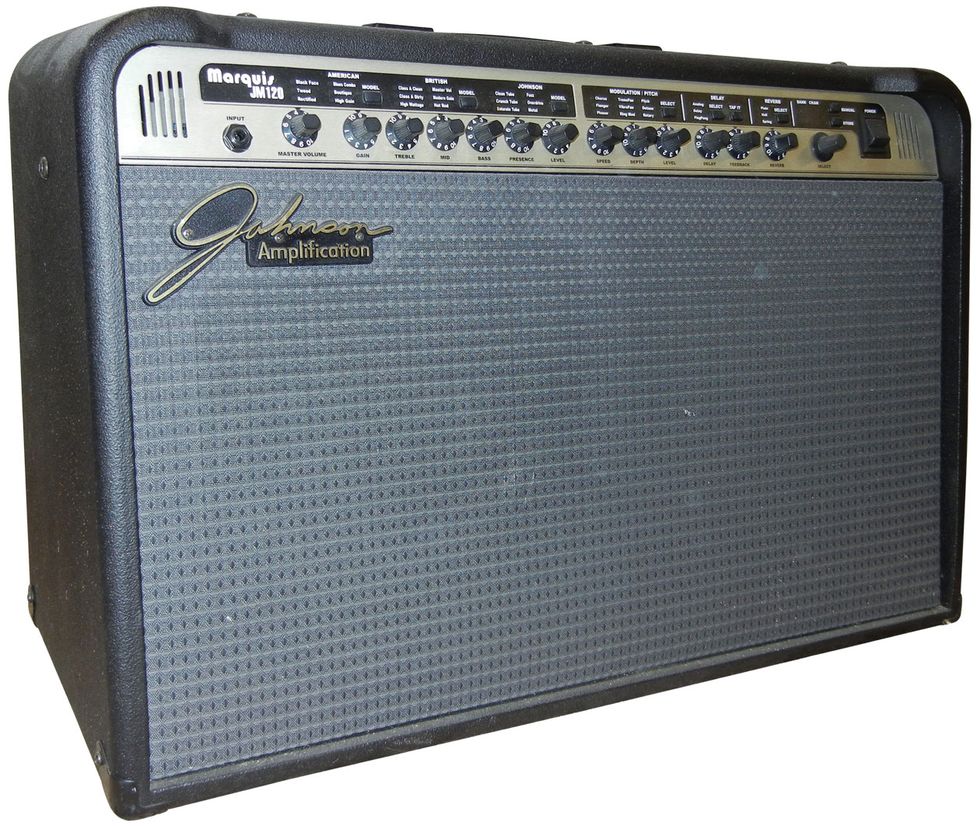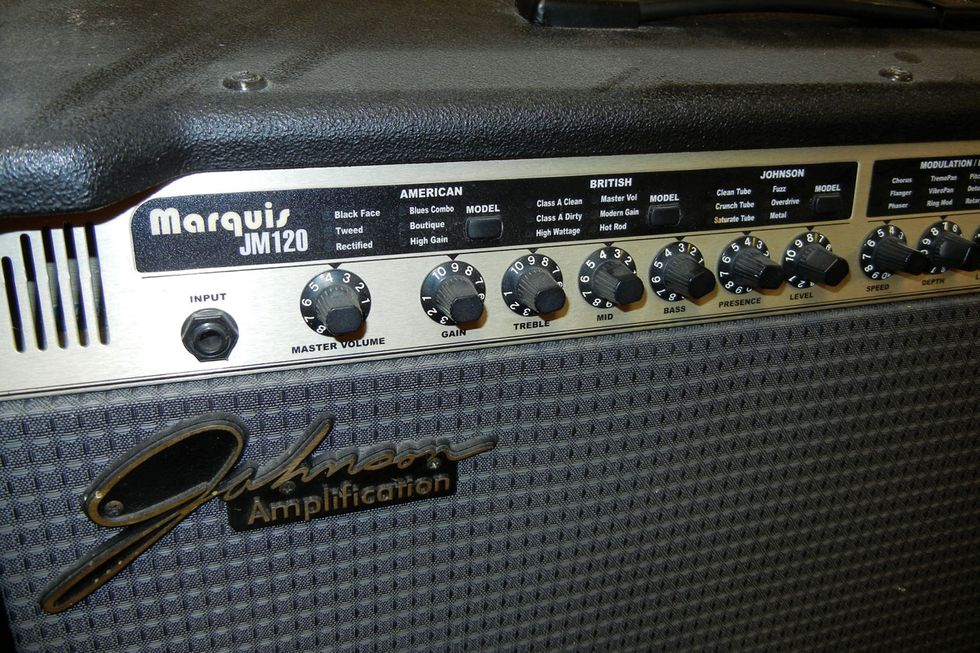Hey Zach,
I bought this amp at a guitar show 15 or so years ago, and got what I thought was a smoking deal at the time. I was intrigued by the different sounds the amp could recreate, but didn’t end up using it much. It did not come with a footswitch, and I found that it is hard to use without that. The other thing is, this amp weighs a ton! Can you tell me about this amp and if my smoking deal is worth any more today?
Thanks,
Rick
Fort Worth, Texas
Hey Rick,
I’ve picked up one of these amps before, and you aren’t kidding. They are heavy! I suspect the weight comes from the huge power transformer along with all the other circuitry. Johnson Amplification (not to be confused with the Johnson brand name used on a line of imports from Asia) built what was dubbed as the “world’s first tube-integrated modeling amplifier.” While other companies like Line 6 and Tech 21 released modeling amplifiers before Johnson, no one else had successfully utilized tubes as part of their design.
For anyone unfamiliar with modeling amplifiers, they basically recreate the tone/sound of one or more popular amps (via the push of a button) all in one unit. In the ’80s and ’90s, vintage amps were becoming increasingly collectible, which resulted in many guitarists not being able to afford amps that produced certain tones. Add to that the wide variety of amps and tones available, and guitarists often found themselves needing several amps to play a wide variety of music. Enter the modeling amp.
Looking for the smooth tone of a ’50s Fender tweed? Just dial it up. How about the big crunch of a Marshall 100-watt head? Tune it in. The high gain of a Mesa/Boogie Dual or Triple Rectifier? A modeling amp can do that, too. Nearly all modeling amps utilize digital circuitry, which is what makes it possible to have these sounds in one amplifier. And in the late 1990s, this was very cutting edge. That said, one of the main complaints about modeling amps is the lack of tube tone that’s so highly sought after by many guitarists.
Johnson Amplification was a subsidiary of DigiTech, and utilized a design by John Johnson. Introduced in 1997, Johnson modeling amplifiers produced many of the tones guitarists were looking for, but also incorporated tubes as part of the preamp section to produce an even more organic voice. These amps were technically considered hybrids, since they had a preamp tube and a solid-state power section.
Johnson produced five main models during their short 5-year existence: the JT50 Mirage, Marquis JM60, Marquis JM120 Stereo, Millennium JM150, and Millennium JM250. Your amp, the Marquis JM120 Stereo, is essentially the middle-of-the-road model. It features 120-watt output (60 watts to each of the two 12" speakers), a single 12AX7 tube in the preamp stage, 18 amp models (six American, six British, and six Johnson originals), modulation/pitch, delay, and reverb effects, and 27 factory and 27 user presets. The higher-end Millennium models, meanwhile, featured two preamp tubes and several other features, including 36 amp models and a digital display.
In addition to onboard modulation/pitch, delay, and reverb effects, and 27 factory and 27 user presets, the Marquis JM120 Stereo featured 18 different amp models categorized as British, American, or Johnson.
Originally priced at $1,299, the JM120 was not cheap, but considerably less than the top-end JM150 Millennium combo that retailed for $2,100. You are correct that the functionality of these amps is limited without the optional J3 or J8 footswitch—at least if you are onstage or a few feet away from the amp.
Modeling amp technology advanced quickly in the 2000s, with the introduction of Line 6’s POD system and the like. So the need to lug around a ridiculously heavy amp was no longer necessary, and these Johnson amps quickly became outdated. Given that, they unfortunately didn’t hold their value well, and by mid-2002, Johnson Amplification ceased production of all amps. (They did produce footswitches and a few other items while still offering customer support for some time after that.) Today, a Marquis JM120 Stereo is worth between $300 and $400, and you’d need to add in $50 to $100 for one of the footswitches, depending on the model.
While your smoking deal hasn’t necessarily produced a big return on investment over the past 15 years, you can be proud that you have a pioneering piece of amplifier history that still functions. And if you don’t have to move it often, there is no reason to get rid of it!


















